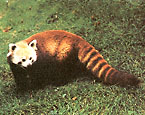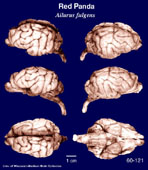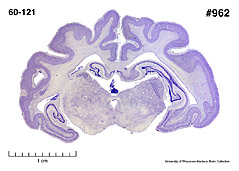|
Red
Panda
(Ailurus fulgens) #60-121 |
||||
|
|
Physical
characteristics and distribution
|
|
The
body of the Red Panda is supported by short bear-like legs.
Head and body length is 520-635 mm with a tail length of 280-385
mm. The head is large and rounded with a short, pointed snout
and medium pointed ears. The fur is soft and long with rust
brown coloration. The hair of the chin and inner ears in white
and there is a rusty-red stripe beneath each eye. Its tail
is long and bushy with light red rings and the underside is
shiny black. Lesser panda has extremely sharp claws. It lives alone or in pairs and is most active from dusk to dawn. The Red Panda is crespucular spending most days sleeping in trees. It feeds on bamboo shoots, succulent plants, roots and occasionally eggs and small vertebrates. Because of its sharp claws the lesser panda can climb trees very quickly and move rapidly from tree to tree. Litters
of 1-4 young are born in the spring. Generally they will stay
with the mother for about a year or until the next litter
is born. The Red Panda, endangered, occurs in mountain forests and bamboo thickets in N Burma, China (Sichuan, Xizang, Yunnan), Nepal, sikkam (India). |
|
Description
of the brain
|
|
Animal
source and preparation
|
|
All
specimens collected followed the same preparation
and histological procedure.
|
Other Related Resources (websites and publications)



